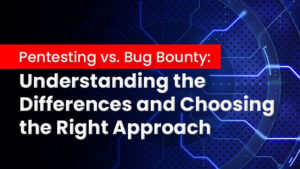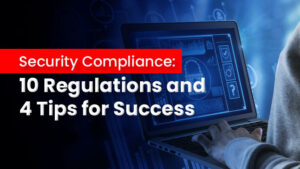Introduction
A container orchestration framework known as Google created Kubernetes and is now supported by the Cloud Native Computing Foundation (CNCF). It is made to automate containerized application deployment, scalability, and management. By automating the deployment, scaling, and management of containerized applications, Kubernetes allows developers to concentrate on creating and maintaining their applications while abstracting away the intricacies of the underlying infrastructure.
Due to its complexity, Kubernetes requires a lot of configuration and management. By applying security best practices, you can make Kubernetes workloads secure, especially in a production environment, by addressing critical design flaws and platform dependencies. This article covers detailed knowledge of Kubernetes Security.
Kubernetes Security
Security for Kubernetes clusters and the workloads that run on them is practiced in this area. Although Kubernetes comes with a variety of security capabilities out of the box, it is still crucial to put additional security controls in place to safeguard your cluster.
Best Practices
Following are the Kubernetes Security Best Practices:
-
Enable Kubernetes Role-Based Access Control (RBAC)
RBAC allows you to control who has access to the Kubernetes API and what rights they have.
RBAC is typically enabled by default on Kubernetes 1.6 and later (and later on some hosted Kubernetes providers). When you install RBAC, you must also disable the traditional Attribute Based Access Control (ABAC) since Kubernetes mixes authorization controllers.
Choose namespace-specific rights over cluster-wide permissions when using RBAC. Do not give cluster administrator privileges, not even while debugging. It is safest to permit access when necessary for your particular situation.
-
Use Third-Party Authentication for API Server
Kubernetes should be integrated with a third-party authentication provider, such as GitHub. In addition to adding multi-factor authentication, this guarantees that the kube-apiserver does not alter when users are added or withdrawn. Ensure users are not managed at the API server level, if possible. Moreover, OAuth 2.0 interfaces like Dex are available.
Kubernetes nodes should not be immediately accessible from public networks and must be on a different network. Direct links to the main business network should be avoided.
Only if Kubernetes control and data traffic are isolated will this be achievable. Without open access to the data plane, both pass down the same pipe, and open access to the control plane follows naturally. Ideally, Nodes should be set up with an ingress controller that restricts connections via the Network Access Control List (NACL) to those from the master node on the allocated port.
-
Monitor Network Traffic to Limit Communications
Cluster networks are typically extensively used by containerized applications. Learn how your application interacts with other applications by watching active network traffic and comparing it to the traffic permitted by Kubernetes network policy. Doing so will help you spot odd communications.
In addition, you can spot network policies not used by cluster workloads by comparing active traffic to allowed traffic. This information can be leveraged to improve the approved network policy by eliminating unnecessary connections to lessen the attack surface.
The use of process whitelisting to identify unexpectedly running processes is highly effective. The initial step of watching the program over time is determining all active processes during typical application behavior. Runtime analysis at the process level is challenging. Numerous commercial security solutions may be used to analyze and spot irregularities in active process customers.
Ensure that audit logging is enabled and that you are looking for any strange or undesirable API requests, notably failed authentications. Failure to authorize could indicate that a hacker is attempting to use credentials that have been stolen.
The -audit-policy-file switch can enable audit logging and specify precisely which events should be documented when files are passed to kube-apiserver.
-
Keep Kubernetes Version Up to Date
Always prepare to upgrade to the most recent version of Kubernetes. If you use a hosted Kubernetes provider, see if your supplier supports automatic upgrades. Upgrading Kubernetes might be a challenging procedure.
Always be prepared to update Kubernetes to the most recent version. Check to determine if your vendor of hosted Kubernetes supports automatic upgrades. Kubernetes upgrades could be challenging to do.
You can use the following configuration parameters to lock the kubelet and lessen the attack surface:
-
Keep Kubernetes Up to Date
Regularly update your Kubernetes cluster to the latest stable version to benefit from security patches and bug fixes.
-
Follow the Principle of Least Privilege
Use Role-Based Access Control (RBAC) to limit the permissions of users and services to the minimum necessary for their tasks.
Apply RBAC rules to service accounts, pods, and users to ensure granular control over cluster access.
-
Secure Cluster Configuration
Use robust authentication methods, such as client certificates, OIDC, or Azure Active Directory, to secure access to the Kubernetes API server.
Enable API auditing to log and monitor API server requests.
Limit access to the Kubernetes API server by utilizing firewalls, network policies, and VPNs.
-
Implement Network Policies
Enforce network segmentation and isolation by creating Network Policies to control pod-to-pod communication.
Restrict access to sensitive services and pods by specifying allowable ingress and egress traffic.
-
Secure Images and Containers
Regularly scan container images for vulnerabilities and apply security patches.
Use signed container images and implement image verification.
Utilize Kubernetes PodSecurityPolicies to enforce container runtime security constraints.
Use Kubernetes Secrets to store and manage sensitive data like API tokens and passwords.
-
Manage API and Web Console Access
Restrict access to the Kubernetes Dashboard and API server by implementing strong authentication and authorization mechanisms.
Turn off the Dashboard in production environments if not needed.
You can put several other security measures in place to protect your Kubernetes cluster in addition to these recommended practices. Network security technologies, for instance, can control access to your cluster, and intrusion detection and prevention systems (IDS/IPS) can be used to keep an eye out for harmful activities in your cluster.
Kubernetes Security Importance
Kubernetes security is of paramount importance for several key reasons:
- Protection Against Cyber Threats: Kubernetes clusters are attractive targets for cyberattacks. Without adequate security measures, malicious actors can exploit vulnerabilities to gain unauthorized access, steal data, disrupt services, and compromise the integrity of applications.
- Data Protection: Kubernetes often hosts mission-critical applications and sensitive data. Security breaches can expose confidential information, including personal data, financial records, and intellectual property. Protecting this data is essential to maintain trust and comply with data protection regulations.
- Business Continuity: Security incidents, such as unauthorized access or service disruptions, can lead to downtime and financial losses. Kubernetes security measures help ensure business continuity by preventing and mitigating security threats and vulnerabilities.
Conclusion
Kubernetes security is critical to deploying and managing containerized applications in production environments. Securing your Kubernetes clusters is essential to protect against potential threats and vulnerabilities.







